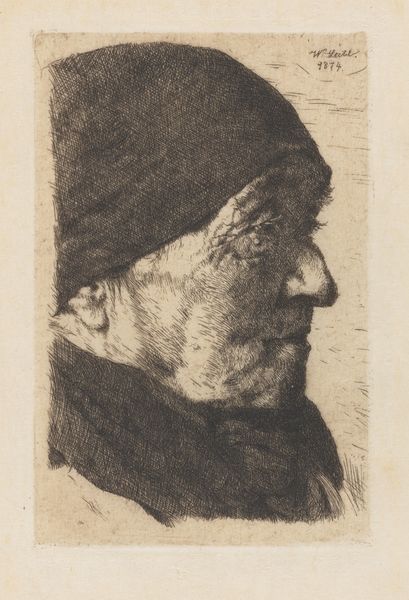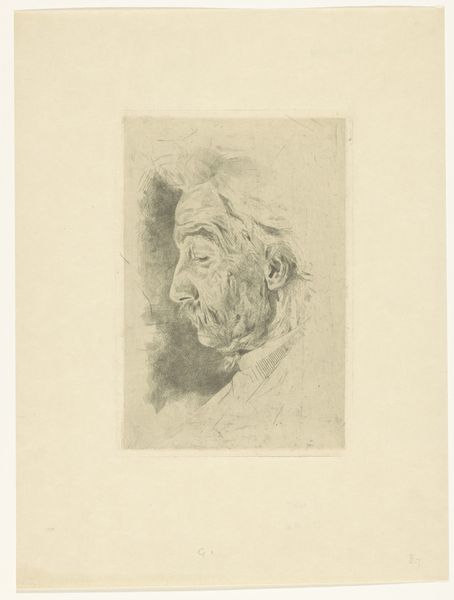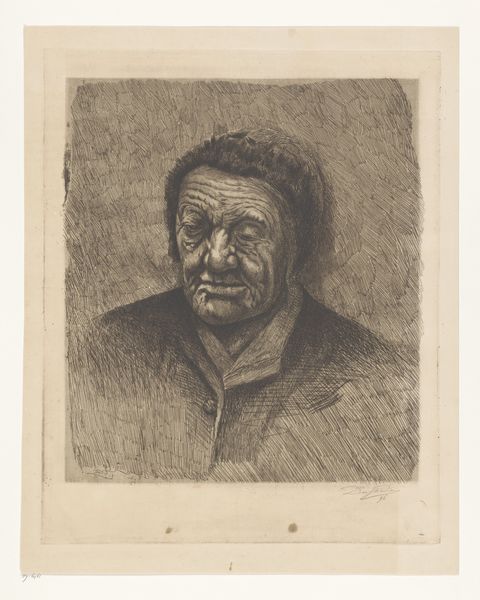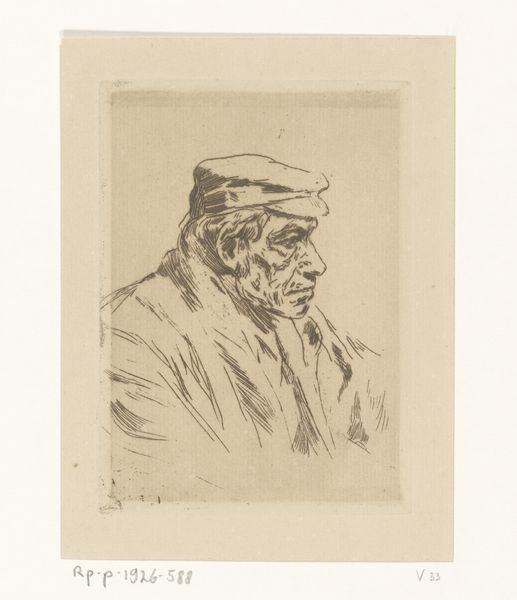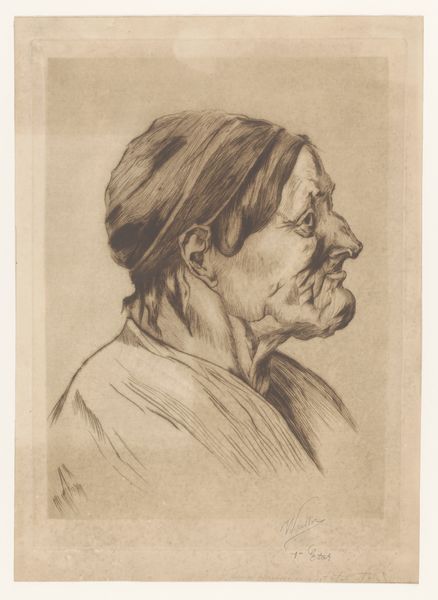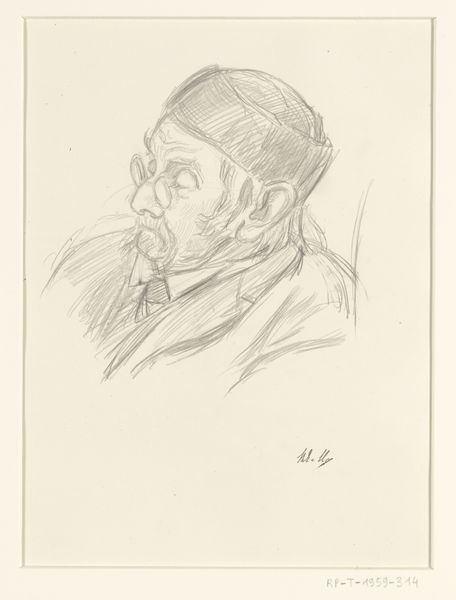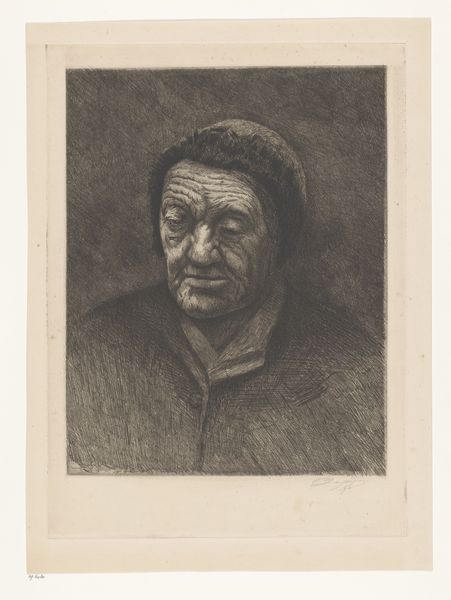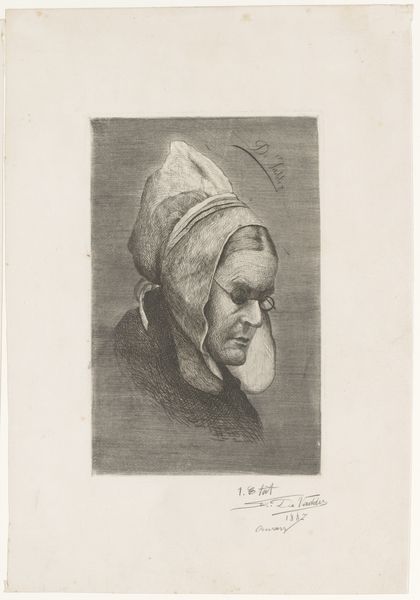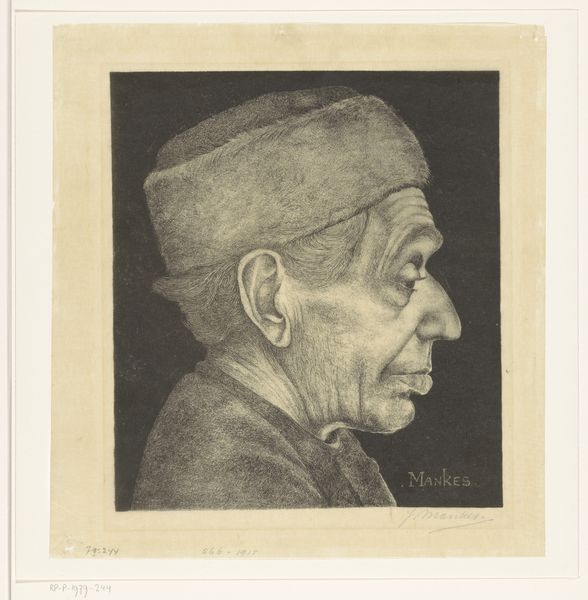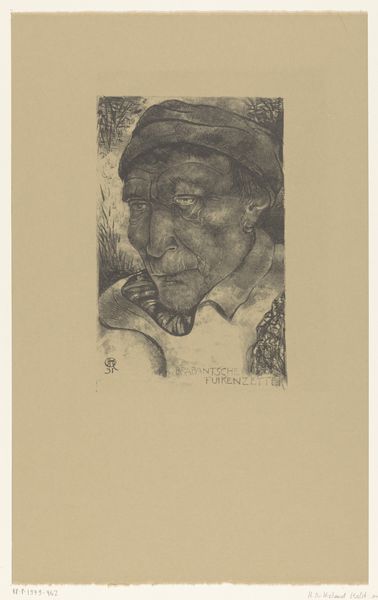
drawing, pencil
#
portrait
#
drawing
#
dutch-golden-age
#
impressionism
#
caricature
#
pencil drawing
#
pencil
#
portrait drawing
#
genre-painting
#
realism
Dimensions: height 247 mm, width 184 mm
Copyright: Rijks Museum: Open Domain
Curator: Welcome! We’re standing before Anthon Gerhard Alexander van Rappard’s “Head of an Old Blind Man,” a drawing rendered between 1868 and 1892. Editor: Striking. There’s a raw intensity in his gaze, or rather, in where his gaze should be. The artist masterfully uses light and shadow to convey a deep sense of sorrow, or perhaps resignation. Curator: The choice of pencil as the medium is critical here. Rappard, belonging to the Dutch Realist movement, favored direct and unembellished techniques. This allowed him to authentically portray the lived experiences and socio-economic realities of his subjects. What does this stark rendering evoke for you? Editor: I am drawn to the texture. See how the pencil strokes create depth in the face? It reminds me of the visual weight achieved through chiaroscuro. The cross-hatching, the sharp contrast between the forehead and shadowed eyes…it's all carefully calibrated. How do you see the relationship between the subject and the societal conditions of the time? Curator: This drawing, made during a period of industrial growth and urban expansion, might offer insight into social marginalization. An old, blind man could symbolize those left behind, casualties of progress ignored by the rapidly changing world around them. Note the texture of his cap. I would venture a guess at coarse wool, a commonplace fabric accessible to the lower classes. Editor: An interesting theory. I can also appreciate the structural elements: how the artist organizes tonal variety to lead the eye. The sunken eyes invite you inward to witness something intimate, something deeply private. It really speaks to Rappard’s ability to translate the human condition using purely formal means. Curator: Indeed. By employing drawing as his primary tool, Rappard democratized portraiture. Unlike painted portraits, accessible mainly to the upper class, his works brought images of the everyday person to a wider audience. It brings us face-to-face with realities we might rather avoid. Editor: A potent statement about artistic accessibility. The rendering itself, from a purely visual perspective, presents a unique play on visual perspective, shadow, and tonal relationships. Thanks for unveiling new perspectives on Rappard's powerful statement. Curator: Thank you. By considering both formal and social elements, we start to unravel a fuller story of the artwork.
Comments
No comments
Be the first to comment and join the conversation on the ultimate creative platform.
